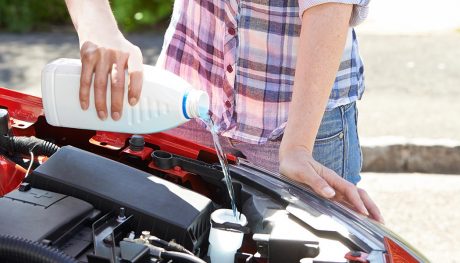
Prepping a car to be painted is a lot more work than the actual painting
Want to Paint Your Car? The Real Work Is in the Prep
Like any paint job, knowing how to prep a car for paint will ensure the hard work you’re about to do is not wasted. Paint won’t stick very well to many surfaces, like bare wood, stone, concrete and especially the metal of your car’s body. Not only that, but paint will magnify surface defects underneath it, not cover them up.
Good prep makes the car paint job last a long time, and bad prep ruins good paint jobs. Here are some tips for how to prep a car for paint, as well as some mistakes to avoid.
It Has to Be Clean, Very Clean
A popular myth is that you can simply wipe a car down with lacquer thinner then spray paint on it. Perhaps your best friend even advised you to do that.
The new paint job will look good at first, but months later your expensive paint will start peeling off because of poor adhesion.
It Has to Be Smooth, Very Smooth
Another myth is that you don’t have to fill in and then sand down all the tiny pits, scratches and nicks in your car’s finish before applying a new coat of paint.
But painting over those imperfections will make them look even bigger. That’s because paint builds up on the edges of scratches and pits, giving them the impression that they are larger.
Clean It Again Before You Spray Primer On
So you put a lot of time into sanding your car smooth before painting it. But now your new paint is blistering and forming bubbles in several spots. It looks bad.
That happened because you touched the car after you had cleaned and sanded it. Oils from your skin were left on the car’s surface and prevented the paint from forming a good bond. The surface really does have to be clean, almost as clean as a NASA operation.
Two Types of Adhesion
Paint sticks to a surface two ways, by a mechanical bond and by chemical attraction. Even after you sand your car very smooth, microscopic roughness will remain. Think of it as a light scuffing. The paint needs that texture to grip. Without that scuffing paint won’t stick very long, like when you apply paint to a mirror. It’s too slick to adhere to.
For a chemical bond, molecules in the paint have to bond to molecules in the underlying primer or paint. Additives in the paint make it do that.
Good Prep Work Makes the Paint Look Good and Last a Long Time
Most of the work in painting a car is in the prep. First you will wash the car with a special cleaner to remove all the old wax and residue from acid rain. Household detergent won’t do it well.
Then you will spend many hours wet sanding your car again and again, until it has the proper surface for new paint to adhere to. Then you will mask over every tiny detail that you don’t want painted over. After all that laborious work, spraying the paint on is the easy part.
It’s not good to do all that work in direct sunlight. Try to find a shady place to wash and sand, so residue doesn’t bake onto your car from sunlight. Just saying. That’s why you never wash and wax your car in the blistering heat of a glaring sun.
Remove Decals You Don’t Want Painted Over
You can’t mask off a decal with tape and expect it to look good. Decals must be removed. How? Ask your new friends at the auto body store what product they sell for that.
You can also Google how to remove decals from cars.
Door Jambs Are a Special Problem
If you are changing the color of your car consider painting the door jambs as well. Otherwise the car will look funny every time you open a door. The jambs have to match the exterior color.
Painting door jambs is time consuming, tedious work. A lot of cleaning is involved, as grease accumulates from years of oiling door hinges and locks. Then there is a lot to mask over.
Paint does not look good on door weather strips and sill plates. For that reason alone, many people decide to paint their car the same color it is now, to avoid all that work on the door jambs.
Wet Sanding with a Block
You can’t use your bare hands to sand a car. Your fingers will wear shallow spots in the primer and paint. You need to get a sanding block, which is a semi-pliable, small block of rubber that holds wet sandpaper. Use that instead of your bare hands to ensure a flat surface.
You will also need several grades of wet sandpaper, all which will be amazingly fine grained. But the fine grain would rapidly clog up with sanding dust. That’s why you use water as you sand, to keep the sandpaper clean.
You’ll also need a tube of nick, pit and scratch filler. Easier to use than body filler, it’s made for filling all those tiny imperfections.
If you’re working on a resto mod it probably has old-fashioned rain channels above the windows. Yes, there is a special filler for that as well, and it also comes in a tube.





